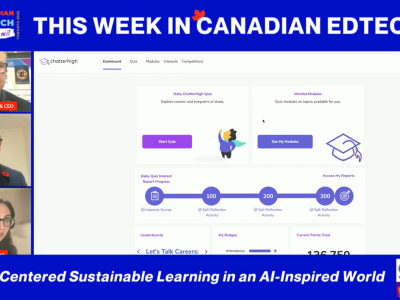Mississauga News
Imagine lessons brought to life with holograms.
Mississauga-based educational technology (ed-tech) consultant Robert Martellacci says we’re not that far off.
Without setting an exact date of arrival, he also feels that other advancements such as augmented reality, or a more personalized approach through on-demand learning, could soon be coming to classrooms.
“Fast-forward 10 years, 20 years from now, you can learn what you want to learn from whomever,” said Martellacci, a former administrator at York University who now runs the start-up company MindShare Learning, which focuses on ed-tech trends for kindergarten to Grade 12 students.
The possibilities are endless, he said, noting how e-learning gives students the chance to learn from where they choose.
Too out there? Perhaps this will put things in perspective: it wasn’t too long ago that the computational power that once filled his high school’s basement in the 1970s, now fits in your hand by way of the smartphone, he said.
Even without drifting too far from the present, he said big changes will be seen in the next five years with advances in cloud technology and gaming in education.
“I’m optimistic that we are going to continue see this massive shift to blended learning, cloud computing, mobile learning, where it’s going to become seamless and enable students to better understand and take control of their own learning,” he said.
Much like the industrial revolution gave way to a “factory model” in the classroom with rows of seats and the teacher at the front, he said, the future of work in the digital revolution is already changing to a more “collaborative, guide-on-the-side” look that will train students for a new style of career path, in which millennials now expect to have somewhere between five to eight careers along the way.
However, while STEM (science, technology, engineering and math) fields that focus on popular pursuits like robotics and coding are hot right now, Martellacci, who’s also part of the educational advocacy group C21 Canada, still believes you have to strike a balance between your passion and being practical about your job prospects.
“It’s not all about technology at the end of the day – you’ve got to be well-rounded, including the arts and physical activity is a big part of that, too,” he said. “Arm yourself with skills that are going to serve you well.”
The shared economy and start-up culture offer a beacon of hope, he added, as individuals have access to technological tools that allow them to create their own job.
Since innovation is faster than a speeding bullet when it comes to most bureaucracies, teachers are a huge part of driving the change at the grass roots level, Martellacci said, and
he’s noticed that “professional learning networks” have developed through social media channels like Twitter for teachers to collaborate with peers.
“Teachers have never been so empowered before to have a voice through social media.”
Funding is always going to be an issue when it comes to implementing technology into the classroom, he noted. But what’s really going to push adoption ahead are fundamental shifts in assessments and curriculum, he said, citing educational writer Charles Fadel, who was a recent guest on Martellacci’s MindShare podcast.
In terms of provinces leading the charge, British Columbia is at the top of Martellacci’s list.
With some of the population living in rural areas the phrase “necessity is mother of invention” comes to mind as BC has seen a surge in online learning. The mountainous province has also just announced that it will be implementing computer coding into
its curriculum from kindergarten to Grade 12 students.
He cited Singapore and Finland as other forward-thinking places to watch in education.
“We’re in a digital revolution and it’s exciting times. I like to say, ‘Where there’s chaos there’s opportunity.'”









